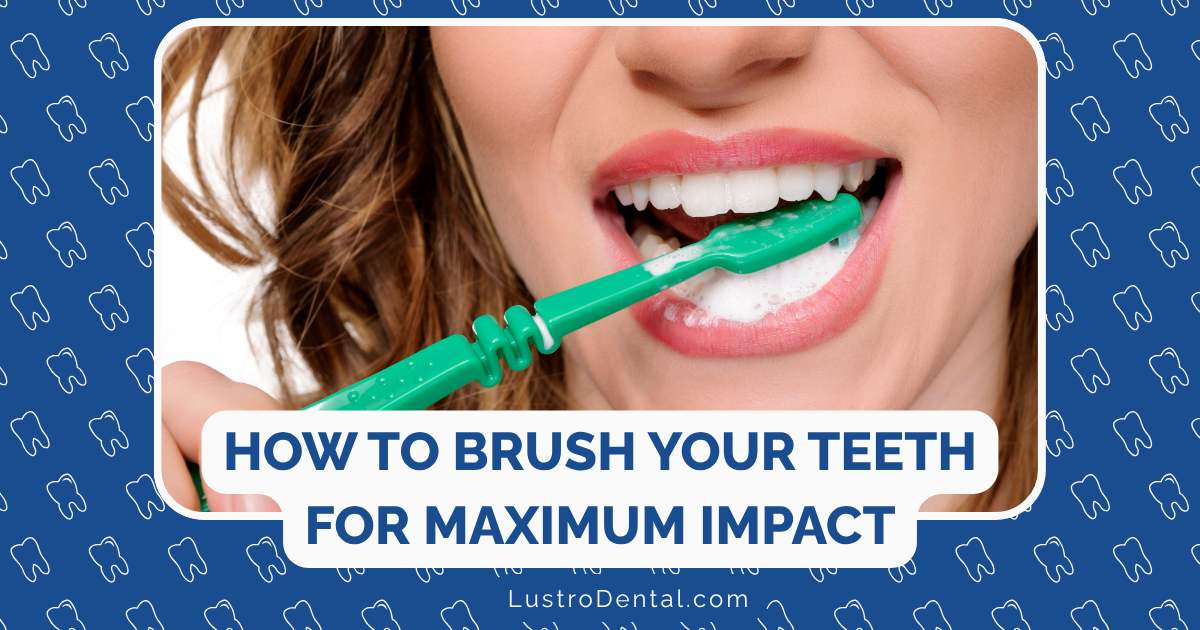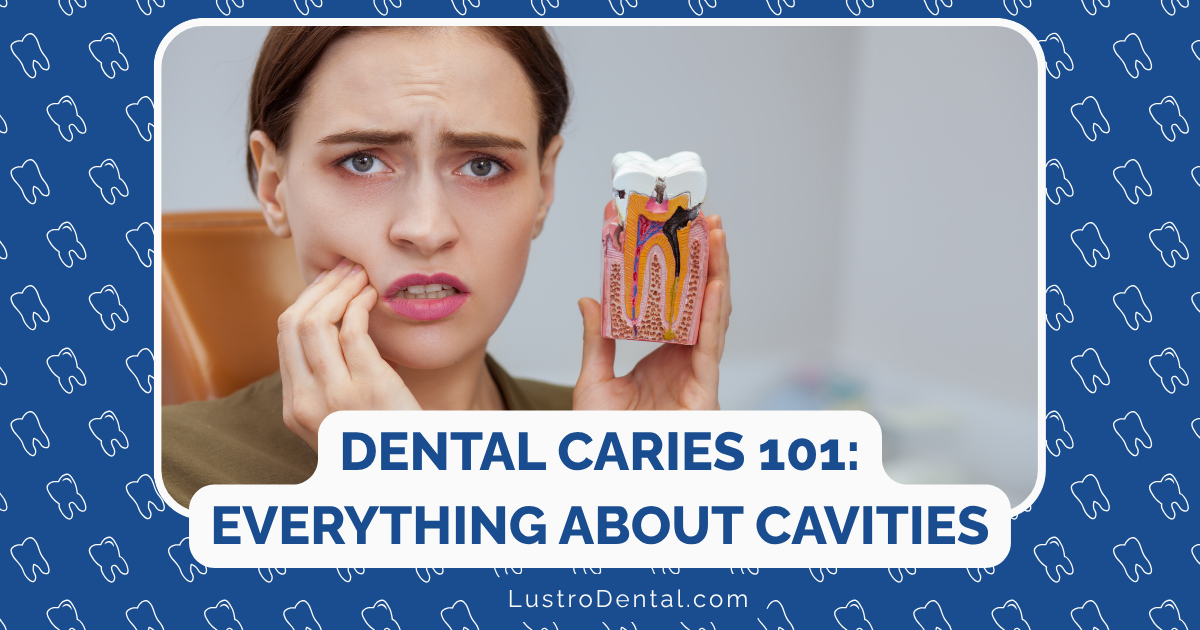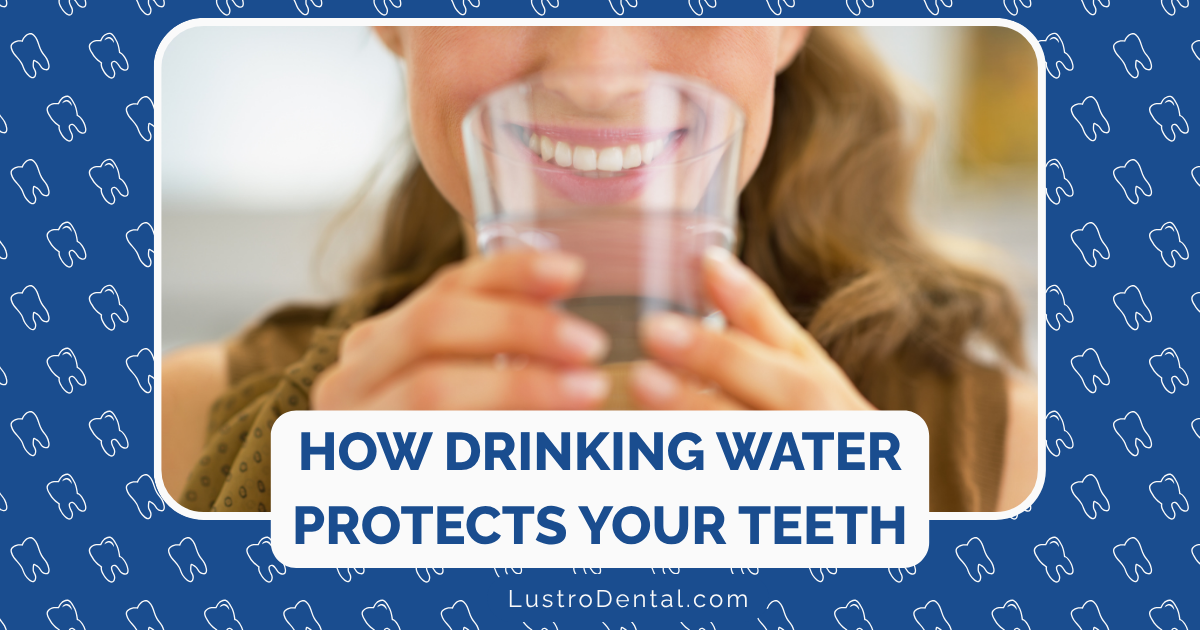Brushing Reimagined: Finding Your Perfect Technique for Optimal Oral Health

It’s something most of us have done twice daily since childhood, yet surprisingly few people brush their teeth correctly. Despite its seeming simplicity, effective toothbrushing is a nuanced skill that significantly impacts our oral health. Beyond just preventing bad breath, proper brushing techniques can prevent gum disease, reduce cavity risk, and even contribute to overall health and wellbeing.
But here’s the truth many dental professionals acknowledge: there isn’t a single “perfect” brushing technique that works optimally for everyone. Your ideal approach depends on factors like your dental anatomy, existing oral health conditions, manual dexterity, and even the specific challenges of your oral microbiome.
In this comprehensive guide, we’ll explore the science behind effective brushing, compare different techniques recommended by dental professionals, and help you discover your personalized approach to oral care that delivers the best results for your unique needs.
The Science Behind Effective Brushing
To understand what makes brushing effective, we need to examine what happens in your mouth at the microscopic level.
The Biofilm Challenge
What we commonly call “plaque” is actually a complex biofilm—a structured community of microorganisms embedded in a self-produced matrix:
- Forms within hours after cleaning
- Contains hundreds of bacterial species
- Adheres firmly to tooth surfaces
- Creates a protective environment for bacteria
- Becomes increasingly difficult to remove over time
According to research published in the Journal of Dental Research, mature biofilm (24+ hours old) is significantly more resistant to removal than newly formed biofilm, which is why regular brushing is so important.
The Mechanical Action
Effective brushing works primarily through mechanical disruption of this biofilm:
- Bristles physically dislodge bacteria and food particles
- Motion creates fluid dynamics that reach slightly beyond bristle tips
- Toothpaste ingredients enhance cleaning and provide additional benefits
- Proper technique ensures all accessible tooth surfaces are cleaned
A study in the Journal of Clinical Periodontology found that the mechanical action of brushing is more important than the toothpaste used, though both work together for optimal results.
Critical Areas Often Missed
Research using plaque-disclosing agents has identified several areas commonly missed during brushing:
- The gumline (especially on the tongue-facing surfaces)
- Between teeth (interdental spaces)
- Back surfaces of last molars
- Irregular areas around dental work
- Grooves and pits on chewing surfaces
A comprehensive technique addresses these challenge areas deliberately rather than relying on random brushing patterns.
The Role of Time and Pressure
Two factors significantly impact brushing effectiveness:
- Duration: The American Dental Association recommends brushing for two full minutes, as research shows plaque removal increases significantly between 30 seconds and 2 minutes of brushing.
- Pressure: Contrary to intuition, harder brushing isn’t better. Studies in the Journal of Periodontology show that excessive pressure can damage gum tissue and tooth enamel while providing no additional cleaning benefit.
Understanding these scientific principles helps explain why specific techniques have been developed and why personalization matters so much.
Common Brushing Techniques Explained
Dental professionals have developed several systematic approaches to toothbrushing, each with particular strengths and ideal applications.
The Modified Bass Technique
Often considered the gold standard by many dental professionals:
How to Perform:
- Hold your toothbrush at a 45-degree angle to your gumline
- Apply gentle pressure so bristles work slightly under the gumline
- Use short, gentle, vibrating back-and-forth motions (about 2 teeth width)
- Roll the brush toward the chewing surface (optional “sweep” component)
- Repeat for all outer and inner tooth surfaces
- Clean chewing surfaces with gentle back-and-forth strokes
- Brush the tongue gently to reduce bacteria
Best For:
- Gum disease prevention
- Plaque removal at the crucial gumline area
- Adults with normal dexterity
- Those with early signs of gingivitis
Research in the International Journal of Dental Hygiene shows the Bass technique is particularly effective at removing plaque from the gingival third of the tooth (near the gumline), where gum disease typically begins.
The Stillman Technique
A gentle technique focusing on gum stimulation:
How to Perform:
- Position the brush at a 45-degree angle to the gumline, with bristles pointing toward the crown
- Apply light pressure to partially blanch the gums (whiten slightly)
- Vibrate the brush while gradually moving toward the chewing surface
- Repeat across all tooth surfaces
Best For:
- Those with gum recession
- Sensitive gums
- Post-periodontal surgery patients
- Older adults with exposed root surfaces
This technique is gentler than the Bass method while still providing effective cleaning, making it ideal for those with sensitive tissues.
The Charter’s Technique
Specifically designed for people with orthodontic appliances or fixed bridges:
How to Perform:
- Hold the brush at a 45-degree angle pointed toward the chewing surface (opposite of Bass)
- Use gentle vibrating motions
- Focus on cleaning around brackets, wires, and other dental appliances
- Pay special attention to the areas where appliances meet the tooth surface
Best For:
- Orthodontic patients
- Those with fixed bridges or splints
- Areas with tight spacing between teeth
- Cleaning around dental implants
A study in the American Journal of Orthodontics and Dentofacial Orthopedics found that the Charter’s technique removed significantly more plaque around orthodontic brackets than standard brushing methods.
The Fones (Circular) Technique
Often taught to children due to its simplicity:
How to Perform:
- With teeth closed in a normal bite
- Place the brush perpendicular to the teeth
- Make wide circular motions covering several teeth at once
- Ensure circles are large enough to stimulate gums
- Brush chewing surfaces with gentle back-and-forth motions
Best For:
- Young children learning to brush
- Those with limited manual dexterity
- Simplified routine for elderly or disabled individuals
- Supplementing more precise techniques
While not as effective at the gumline as the Bass technique, the Fones method is easier to master and provides reasonable cleaning when performed diligently.
The Scrub Method
The intuitive approach most people default to without training:
How to Perform:
- Place the brush perpendicular to the teeth
- Use back-and-forth horizontal motions
- Apply moderate pressure
- Cover all tooth surfaces systematically
Best For:
- Chewing surfaces
- Supplement to more precise techniques
- Temporary approach while learning better methods
- Those with significant manual limitations
Research in Oral Health & Preventive Dentistry suggests this technique is less effective at the gumline and may contribute to gum recession and enamel wear when used with excessive pressure.
Finding Your Perfect Technique: Personalization Factors
The “best” brushing technique varies based on individual factors. Understanding your personal needs helps you select and modify techniques appropriately.
Oral Health Status
Your current oral health significantly influences technique selection:
For Healthy Gums:
- Modified Bass technique is generally ideal
- Focus on maintaining health rather than addressing specific issues
- Regular technique reassessment with dental professionals
For Gingivitis:
- Emphasize thorough gumline cleaning with Bass technique
- Consider supplemental tools for interdental cleaning
- Potentially increase brushing frequency (with professional guidance)
For Gum Recession:
- Stillman technique to minimize further recession
- Ultra-soft bristles to prevent additional damage
- Gentle pressure with proper angulation
For Post-Periodontal Treatment:
- Follow specific recommendations from your periodontist
- Often involves modified techniques during healing
- May require special attention to exposed root surfaces
According to the American Academy of Periodontology, technique modification based on periodontal status can significantly impact treatment outcomes and disease recurrence.
Dental Work and Orthodontics
Dental restorations and appliances create unique cleaning challenges:
For Braces:
- Charter’s technique around brackets and wires
- Special attention to areas where food commonly traps
- Consider supplemental tools designed for orthodontic patients
For Implants:
- Gentle techniques to avoid scratching implant surfaces
- Special attention to the implant-gum interface
- Possible use of specialized implant-cleaning tools
For Crowns and Bridges:
- Focus on the margin where the restoration meets the tooth
- Modified Bass technique with attention to these junction areas
- Thorough cleaning of undersurface areas of bridges
Research in the Journal of Prosthetic Dentistry emphasizes that proper cleaning techniques around dental work significantly impact both the longevity of the restorations and the health of surrounding tissues.
Physical Limitations
Manual dexterity, mobility issues, and other physical factors may necessitate adaptations:
For Limited Dexterity:
- Simplified techniques like the Fones method
- Modified tools (enlarged handles, electric toothbrushes)
- Focus on consistency rather than perfection
For Visual Impairments:
- Tactile-focused techniques with emphasis on feeling the brush position
- Systematic routines that can be performed without visual guidance
- Possible caregiver assistance with periodic checks
For Cognitive Limitations:
- Simplified, consistent routines
- Visual aids and reminders
- Supervised brushing when necessary
A study in Special Care in Dentistry found that personalized adaptations based on specific limitations significantly improved plaque removal compared to generic approaches.
Timing and Frequency: Myths and Facts
Beyond technique, when and how often you brush significantly impacts effectiveness.
The Two-Minute Minimum
The two-minute recommendation is evidence-based:
- Research shows plaque removal increases significantly up to 2 minutes
- Diminishing returns occur after 2 minutes for most people
- Most people naturally brush for only 30-45 seconds without timing
- Electric toothbrushes with timers help ensure adequate duration
A study in the Journal of Dental Hygiene found that extending brushing from 45 seconds to 2 minutes resulted in approximately 26% more plaque removal, highlighting the importance of adequate brushing time.
Frequency Considerations
The standard recommendation is brushing twice daily, but some situations may warrant adjustments:
Standard Recommendation:
- Morning and evening brushing for most people
- Focus on thorough cleaning rather than frequent, rushed sessions
- Evening brushing is particularly important as saliva flow decreases during sleep
Situations That May Require More Frequent Brushing:
- High caries risk (with dentist recommendation)
- During orthodontic treatment
- After consuming highly acidic foods
- Certain medical conditions that affect oral health
When to Wait Before Brushing:
- After consuming acidic foods or drinks (wait 30-60 minutes)
- After vomiting (rinse with water or baking soda solution, then wait)
- Immediately after using certain medications that affect saliva
According to the American Dental Association, brushing immediately after consuming acidic foods or beverages may actually increase enamel damage, as the acid temporarily softens enamel.
Sequential Approaches
The order in which you brush different areas can impact effectiveness:
The Quadrant Approach:
- Divide mouth into four quadrants (upper right, upper left, lower right, lower left)
- Spend 30 seconds on each quadrant
- Ensures equal attention to all areas
- Particularly useful with electric toothbrushes that have quadrant timers
The Difficult-Areas-First Approach:
- Begin with the areas you typically miss
- Often includes back molars and tongue-side surfaces of lower front teeth
- Ensures these areas receive attention while motivation is highest
- May be more effective for those with attention challenges
Research in Oral Health & Preventive Dentistry suggests that systematic approaches like these result in more thorough cleaning compared to random brushing patterns.
Tools of the Trade: Selecting the Right Equipment
The tools you use significantly impact your brushing effectiveness, regardless of technique.
Toothbrush Selection
Manual vs. Electric
Both can be effective when used properly, but research shows advantages to electric brushes for many people:
- Electric advantages: Built-in timers, pressure sensors, more consistent motion
- Manual advantages: Greater tactile feedback, precise control, no charging needed
- Research findings: A Cochrane Review found electric brushes reduced plaque by 11% and gingivitis by 6% compared to manual brushing after three months of use
Bristle Considerations
Contrary to popular belief, softer is usually better:
- Soft/ultra-soft bristles: Recommended for most people; clean effectively while minimizing tissue damage
- Medium bristles: May be appropriate in specific situations with professional recommendation
- Hard bristles: Generally not recommended due to potential for enamel and gum damage
Head Size and Design
One size doesn’t fit all:
- Small heads: Better access to back teeth and precise cleaning
- Larger heads: Cover more surface area but may compromise access
- Bristle arrangement: Multi-level bristles may clean more effectively around the gumline
- Handle design: Impacts grip and control, particularly important for those with dexterity issues
According to the American Dental Association, the ideal toothbrush should fit comfortably in your hand and mouth, allowing you to reach all tooth surfaces easily.
Toothpaste Selection
Toothpaste isn’t just for fresh breath—active ingredients provide specific benefits:
Key Ingredients and Their Benefits:
- Fluoride: Strengthens enamel and promotes remineralization
- Stannous fluoride: Provides anti-cavity, anti-sensitivity, and anti-gingivitis benefits
- Potassium nitrate: Reduces sensitivity
- Hydroxyapatite: Remineralizes enamel (alternative to fluoride in some formulations)
- Zinc: Helps control plaque and reduce bad breath
- Enzymes: Support breakdown of plaque biofilm
Special Formulations:
- Sensitivity formulas: Contain desensitizing agents for those with dental hypersensitivity
- Whitening formulations: Contain mild abrasives or chemical agents to remove surface stains
- Gum health formulas: Typically contain antibacterial ingredients to reduce gingivitis
- Natural options: Vary widely in effectiveness; look for evidence-based natural ingredients
Research in the Journal of Clinical Dentistry emphasizes that toothpaste selection should be based on individual needs and oral health conditions rather than marketing claims.
Interdental Cleaning Tools
Brushing alone reaches only 60% of tooth surfaces, making interdental cleaning essential:
Dental Floss:
- Traditional string floss: Effective but requires good technique
- Floss picks: Easier to use but less adaptable to different spaces
- Expanding floss: Better for larger gaps
Interdental Brushes:
- More effective than floss for larger spaces
- Available in multiple sizes for different gap widths
- Easier to use for many people compared to traditional floss
Water Flossers:
- Use pressurized water to clean between teeth
- Particularly beneficial for those with braces, bridges, or limited dexterity
- Less technique-sensitive than traditional flossing
Wooden Picks:
- Gentle stimulation of the gums
- Help remove large particles from between teeth
- Traditional option still used in many countries
A systematic review in the Journal of Clinical Periodontology found that combining toothbrushing with interdental cleaning is significantly more effective at reducing plaque and gingivitis than brushing alone.
Beyond Brushing: Complementary Approaches
Even perfect brushing technique can’t address all aspects of oral health. Complementary approaches provide comprehensive care.
Tongue Cleaning
The tongue harbors bacteria that contribute to bad breath and can recolonize tooth surfaces:
- Tongue scrapers: Remove bacteria and debris more effectively than brushing
- Technique: Gentle scraping from back to front, rinsing between passes
- Frequency: Daily, typically after brushing
- Benefits: Reduced bad breath, lower bacterial load in the mouth
Research in the Journal of Periodontology shows that tongue cleaning reduces volatile sulfur compounds (responsible for bad breath) by 75% compared to toothbrushing alone.
Mouthwash Use
Mouthwashes serve different purposes depending on their formulation:
Therapeutic Mouthwashes:
- Antimicrobial: Contain ingredients like chlorhexidine or essential oils to reduce bacteria
- Fluoride: Provide additional cavity protection
- Anti-plaque/anti-gingivitis: Help control plaque buildup and gum inflammation
Cosmetic Mouthwashes:
- Primarily freshen breath temporarily
- Limited therapeutic benefit
- May contain ingredients that mask rather than address oral health issues
Proper Use:
- Use after brushing and interdental cleaning
- Follow package directions for dilution and usage time
- Don’t eat or drink for 30 minutes after fluoride rinses
- Use therapeutic rinses only as directed (some, like chlorhexidine, aren’t meant for long-term use)
According to the American Dental Association, mouthwash should complement, not replace, mechanical cleaning methods like brushing and flossing.
Oil Pulling
This traditional practice has gained modern attention:
- Technique: Swishing oil (typically coconut, sesame, or olive) for 15-20 minutes
- Proposed mechanisms: Oil may bind to bacteria and toxins; mechanical action of swishing
- Evidence: Limited but promising research showing some benefits for plaque reduction and gingivitis
- Considerations: Time-consuming; should complement rather than replace conventional oral hygiene
A study in the Journal of Ayurveda and Integrative Medicine found that oil pulling with coconut oil reduced plaque and gingivitis comparably to chlorhexidine mouthwash when practiced consistently.
Professional Cleanings
Regular dental visits provide cleaning that can’t be achieved at home:
- Professional scaling: Removes hardened plaque (tartar) that brushing can’t eliminate
- Professional assessment: Identifies areas needing improved home care
- Personalized guidance: Provides technique refinement based on your specific needs
- Early intervention: Addresses problems before they become severe
Research in Periodontology 2000 confirms that the combination of effective home care and regular professional cleanings provides the best outcomes for long-term oral health.
The Oral Microbiome: A New Frontier in Oral Care
Recent scientific advances have transformed our understanding of oral health by highlighting the crucial role of the oral microbiome—the community of microorganisms living in your mouth.
Understanding the Oral Microbiome
Your mouth naturally contains hundreds of species of bacteria, fungi, and other microorganisms living in a complex ecosystem:
- A healthy mouth contains 500-700 different microbial species
- These microorganisms form structured communities called biofilms
- Some species are beneficial, some are potentially harmful, and many are neutral
- The composition varies between individuals and can change over time
Research published in the Journal of Oral Microbiology shows that a diverse, balanced oral microbiome is associated with better oral health outcomes.
The Problem with Traditional Approaches
Many conventional oral care products take a “scorched earth” approach:
- Antimicrobial mouthwashes kill bacteria indiscriminately
- Harsh cleaning methods disrupt the natural balance
- Some products create temporary improvements but long-term imbalances
- This approach contradicts our evolving understanding of microbial ecology
Balancing the Oral Microbiome
A more nuanced approach focuses on microbial balance rather than elimination:
- Selective cleaning: Removing harmful biofilm while minimizing disruption to beneficial communities
- pH management: Maintaining an environment that favors beneficial species
- Targeted approaches: Addressing specific pathogens rather than all bacteria
- Supporting beneficial bacteria: Providing conditions where helpful species can thrive
According to research in Periodontology 2000, this ecological approach may provide more sustainable oral health benefits than traditional antimicrobial strategies.
ProDentim: Supporting Microbiome Balance
ProDentim represents an innovative approach to oral health through microbiome support. Each tablet contains 3.5 billion CFUs (colony-forming units) of beneficial bacteria specifically selected for oral health:
- Lactobacillus paracasei: Helps inhibit the growth of harmful bacteria associated with tooth decay and gum disease
- Lactobacillus reuteri: Produces antimicrobial compounds that target pathogenic bacteria while supporting gum health
- Bifidobacterium lactis BL-04: Helps maintain a balanced oral microbiome and supports immune function
The formula also includes supporting ingredients like inulin (a prebiotic that feeds beneficial bacteria) and malic acid (supports saliva production and pH balance).
How ProDentim Complements Brushing
Even the most perfect brushing technique can’t address all aspects of oral health. ProDentim works synergistically with good brushing practices by:
- Supporting what brushing can’t reach: Beneficial bacteria can access areas mechanical cleaning misses
- Creating a healthier environment between brushing sessions: Continuous support for oral health throughout the day
- Addressing the microbial aspect of oral health: Complementing the mechanical aspect that brushing provides
- Enhancing resilience: Supporting a balanced microbiome that’s more resistant to disruption
Many users report that adding ProDentim to their oral care routine alongside proper brushing techniques provides more comprehensive results than either approach alone.
Special Considerations for Different Age Groups
Brushing techniques and approaches should evolve throughout life to address changing needs and capabilities.
Children: Building Healthy Habits
Establishing effective brushing habits in childhood sets the foundation for lifelong oral health:
For Infants and Toddlers (0-3 years):
- First teeth: Clean with a soft cloth or infant finger brush
- Technique: Gentle wiping or very soft brushing
- Parental role: 100% performed by parents
- Toothpaste: Rice-sized smear of fluoride toothpaste once teeth appear
For Preschoolers (3-5 years):
- Technique: Simple circular motions (Fones technique)
- Parental role: Primary brushing done by parents with child participation
- Toothpaste: Pea-sized amount of fluoride toothpaste
- Approach: Make it fun through songs, apps, or stories
For School-Age Children (6-12 years):
- Technique: Transition toward modified Bass technique as dexterity improves
- Parental role: Supervision and assistance, particularly for back teeth
- Independence: Gradually increase child’s responsibility while monitoring effectiveness
- Reinforcement: Regular dental visits for professional assessment and education
Research in Pediatric Dentistry shows that effective brushing habits established in childhood correlate strongly with better oral health outcomes throughout life.
Teenagers: Addressing Unique Challenges
Adolescence brings specific oral health challenges:
- Orthodontic treatment: Often requires specialized techniques like the Charter’s method
- Compliance issues: Competing priorities and independence may affect consistency
- Dietary factors: Increased consumption of acidic beverages and snacking
- Hormonal effects: Can increase gum sensitivity and inflammation
Approaches that emphasize autonomy, technology (like brushing apps), and appearance benefits tend to be more effective than health-focused messaging for this age group.
Adults: Maintenance and Prevention
Adult oral care focuses on maintaining health and preventing deterioration:
- Technique refinement: Periodic reassessment and adjustment of brushing methods
- Addressing specific concerns: Targeting techniques to individual issues (sensitivity, recession, etc.)
- Lifestyle integration: Establishing sustainable routines that fit busy schedules
- Technology utilization: Smart toothbrushes, apps, and other tools to optimize care
A study in the Journal of Periodontology found that periodic technique reinforcement by dental professionals significantly improved brushing effectiveness among adults, even those who had been brushing for decades.
Older Adults: Adapting to Changing Needs
Aging brings unique oral health challenges requiring adaptations:
- Dexterity issues: May necessitate modified tools or techniques
- Medication effects: Many medications cause dry mouth, increasing disease risk
- Exposed root surfaces: Require gentler cleaning approaches
- Cognitive changes: May affect ability to maintain complex routines
Helpful Adaptations:
- Electric toothbrushes with larger handles
- Simplified but systematic routines
- Additional focus on hydration and saliva stimulation
- Caregiver education when assistance is needed
Research in Gerodontology demonstrates that appropriate adaptations can help older adults maintain effective oral hygiene despite age-related challenges.
Troubleshooting Common Brushing Challenges
Even with knowledge of proper techniques, specific challenges can arise. Here are solutions to common brushing problems:
Gag Reflex Issues
A sensitive gag reflex can make brushing back teeth difficult:
- Technique modification: Approach from different angles to avoid trigger areas
- Breathing pattern: Breathe through your nose while brushing sensitive areas
- Distraction: Lifting one foot slightly or humming can reduce gag reflex
- Desensitization: Gradual exposure to brushing trigger areas can reduce sensitivity over time
- Tool selection: Smaller brush heads and specially designed brushes for sensitive individuals
A study in the International Journal of Dental Hygiene found that systematic desensitization techniques reduced gagging in 87% of participants with severe gag reflexes.
Sensitive Teeth or Gums
Pain during brushing often leads to avoidance of proper technique:
- Gentler approach: Lighter pressure and ultra-soft bristles
- Desensitizing toothpaste: Regular use can reduce sensitivity over time
- Technique adjustment: Modified Stillman method for sensitive gums
- Temperature modification: Slightly warm (not hot) water for rinsing the brush
- Professional evaluation: Persistent sensitivity may indicate underlying issues requiring treatment
The American Dental Association recommends addressing sensitivity proactively, as it often leads to inadequate cleaning of sensitive areas, creating a cycle of worsening problems.
Time Constraints
Modern busy lifestyles can make thorough brushing seem challenging:
- Multitasking: Brush while in the shower or while reading/watching news
- Timer use: Ensure you’re actually spending the full two minutes
- Quality focus: Better technique for two minutes is superior to poor technique for longer
- Habit stacking: Link brushing to existing habits to increase consistency
- Realistic scheduling: Identify specific times in your routine for proper oral care
Research in Community Dentistry and Oral Epidemiology shows that consistent, effective short sessions are more beneficial than occasional thorough cleaning.
Motivation and Consistency Issues
Maintaining long-term brushing habits can be challenging:
- Visual feedback: Plaque-disclosing tablets or solutions show areas needing improvement
- Progress tracking: Apps or journals to monitor improvements in dental check-ups
- Reward systems: Self-incentives for maintaining consistent habits
- Accountability: Brushing partners or sharing goals with others
- Connecting to values: Linking oral health to personal values (health, appearance, finances)
Behavioral research in the Journal of Periodontology demonstrates that these motivation strategies significantly improve long-term adherence to oral hygiene routines.
Creating Your Personalized Brushing Routine
Bringing together all these elements, here’s how to develop a personalized brushing routine that works optimally for your unique needs:
Step 1: Assess Your Current Status
Start by honestly evaluating:
- Your current oral health (gum condition, existing dental work, sensitivity)
- Physical factors (dexterity, gag reflex, time constraints)
- Personal preferences (manual vs. electric, flavor preferences, etc.)
- Specific challenges you face with oral hygiene
Step 2: Select Your Primary Technique
Based on your assessment:
- For most adults with good dexterity: Modified Bass technique
- For sensitive gums or recession: Stillman technique
- For orthodontic appliances: Charter’s technique
- For limited dexterity: Fones technique or electric toothbrush
- For specific problem areas: Combination approach targeting different areas with appropriate techniques
Step 3: Choose Your Tools
Select equipment that supports your chosen technique:
- Toothbrush type and size appropriate for your mouth and dexterity
- Toothpaste formulated for your specific needs
- Interdental cleaning tools that work for your tooth spacing
- Complementary products like tongue cleaners or mouthwash if needed
- Consider ProDentim to support your oral microbiome alongside mechanical cleaning
Step 4: Establish Your Routine
Create a systematic approach:
- Set specific times for brushing that you can consistently maintain
- Develop a sequential approach to ensure all areas are cleaned
- Allocate time for interdental cleaning and complementary care
- Use timers or guides to ensure adequate duration
- Plan for different scenarios (travel, busy days, etc.)
Step 5: Implement Feedback Mechanisms
Create ways to monitor effectiveness:
- Periodic use of disclosing tablets to identify missed areas
- Regular dental check-ups with professional feedback
- Track improvements in problem areas
- Note changes in sensitivity, bleeding, or other symptoms
Step 6: Refine and Adapt
Your routine should evolve:
- Modify techniques based on professional feedback
- Adjust as your oral health changes
- Incorporate new tools or products that may benefit your specific needs
- Address emerging challenges promptly
A study in Clinical Oral Investigations found that personalized oral hygiene routines based on individual risk assessment and regular refinement led to significantly better outcomes than generic recommendations.
Conclusion: Your Path to Optimal Oral Health
Effective brushing is both science and personalized art. By understanding the principles behind various techniques and adapting them to your specific needs, you can transform this daily ritual from a mundane task into a powerful tool for oral health.
Remember these key takeaways:
- Technique matters: The specific method you use significantly impacts effectiveness
- Personalization is essential: Your ideal approach depends on your unique oral health situation
- Consistency trumps perfection: Regular, thorough brushing using a good technique is more important than occasional perfect sessions
- Comprehensive care is key: Even perfect brushing needs to be complemented by interdental cleaning and other approaches
- The oral microbiome matters: Supporting beneficial bacteria with products like ProDentim adds a dimension to care that brushing alone can’t address
By reimagining your approach to brushing and implementing the strategies outlined in this guide, you’re not just cleaning your teeth—you’re investing in your overall health and wellbeing for years to come.
Have you found a brushing technique that works particularly well for your needs? Share your experience in the comments below!







